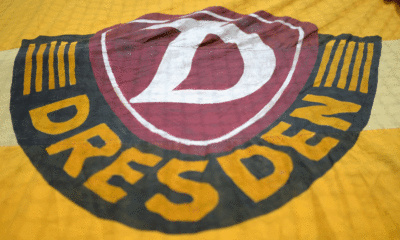Bundesliga
VfB Stuttgart: Bruno Labbadia was the fireman with a watering can
Published
1 year agoon
By
Maria Keane
After 26 match days in the Bundesliga, VfB Stuttgart is bottom of the table – and has therefore fired coach Bruno Labbadia. Even the trainer, known as a firefighter, could not extinguish the conflagration in Stuttgart. An analysis of the causes.
There are already five points that separate VfB Stuttgart from the saving bank. After all, there are only two for relegation. In eleven Bundesliga games under Bruno Labbadia, VfB have only won once and drawn three. The third relegation in seven years is imminent.
There was little confidence in the club’s environment that the sporting management could make a decision in the current situation that would put the 2007 champion back on track. That’s why the club pulled the rip cord on Monday – and presented Sebastian Hoeneß as his successor.
Even Labbadia, known as a fireman, was unable to extinguish the conflagration in Stuttgart. There are many reasons for the chaos on Mercedesstrasse.
VfB Stuttgart: Bruno Labbadia was the wrong man in the wrong place
The hope of stability was linked to Labbadia. Nevertheless, this decision was marked by a lack of ideas from the start. Labbadia is not a trainer that fits any concrete ideas of a sporting management. He’s one who was brought in because he was the most promising of the big names available.
Ultimately, however, the 57-year-old stumbled across a squad that didn’t match his ideas. Labbadia stands for football that is simple on paper: lots of wing play, lots of long balls, lots of counter-pressing. For this he has resorted to a 4-3-3 at many stations. This is also the case at VfB.
“It matters less what I want, but what the team can do,” said Labbadia at his presentation in December: “And what they can do particularly well. We have to find out quickly.” At the beginning of April it is clear that he has not succeeded. In his 4-3-3 there were too many roles that didn’t suit the player types. Josha Vagnoman was used against Union as a right winger, although he has his strengths in deeper spaces. Labbadia was also the one who was always looking for up front, because he couldn’t find a suitable center forward due to Serhou Guirassy’s injury.
For his style of play, he would have needed a classic wall player who can fix and distribute long balls. Instead, however, he relied on Silas, who cannot do exactly that. There was no insight from Labbadia. No attempt to switch to dual leadership or otherwise fix the problems. No adjustments and always the hope that the players would get used to his specifications.
VfB Stuttgart: Squad composition is poor
And yet, in this case, the trainer is probably still the smallest cog in the defective VfB machine. You could also say that Labbadia was a fireman who was supposed to put out a big fire with a watering can. You can give him credit for the fact that his team was clearly inferior in almost no game. On the contrary: Games were lost in which the better opportunities had been played out. For example, in the 0:2 against SV Werder Bremen, when several chances were missed to take the lead and lost through mistakes on the defensive.
So while it’s fair to insinuate that Labbadia didn’t have the best ideas for the squad, it’s just as fair to question which ideas fit in with it at all. Stuttgart has many talented footballers in its ranks. Among them are many young players who have repeatedly shown their potential. But the team obviously lacks stability. Not only from a tactical perspective, but also with regard to the composition.
In principle, everything boils down to Wataru Endo in this regard. The captain is by far the best player at VfB and should pull the strings in midfield and hold the team together. But one anchor is obviously not enough to stabilize the otherwise largely immature squad. There is no axis that prevents the downtrend in difficult moments. The fact that Stuttgart loses most of the tight games and suffers from individual mistakes in crucial situations can only be partially blamed on the coach. Labbadia was the third manager this season. But the problems remained the same.
The balance is not right and there are so many different types of players within the team that the line between supposed flexibility and lack of planning is very thin.
VfB Stuttgart: chaos next to the square
However, if you look at the events that don’t take place directly on the football field, you shouldn’t be surprised at the way the squad was put together. 2019 should be a kind of turning point for VfB Stuttgart. Ex-President Wolfgang Dietrich was the face of the great crisis and descents. Internal power struggles, discord, chaos – Thomas Hitzlsperger and Claus Vogt promised the Swabians the long-awaited seriousness and unity in the management floor.
Not only now, when the repeated descent threatens, it is clear to everyone: That didn’t work. The table football writes of a “climate of intimidation at the level of club politics”. Hitzlsperger is no longer there and Sven Mislintat, whom the former national player brought in to help with sporting planning, also had to go this season.
One obvious reason: disagreement with Alexander Wehrle, Hitzlsperger’s successor. The 48-year-old is assumed in the club environment that he simply has too little idea about the sporting processes. Wehrle once studied administrative science. That’s one of the reasons why he brought two consultants to his side, Sami Khedira and Philipp Lahm, who should compensate for this. He also initiated the installation of Christian Gentner as head of the licensed player department. All without consulting Mislintat. Wehrle already had a problem with the fact that the sporting director took advantage of the power struggle between Hitzlsperger and Vogt in spring 2021 to secure far-reaching competencies within the club. That’s why he decided to weaken Mislintat’s position with Gentner, Lahm and Khedira.
The relationship of trust was severely damaged. Both were unable to find a compromise. When VfB sacked Pellegrino Matarazzo in October, power struggles were already raging internally, making it almost impossible to make a serious decision about a successor. Ultimately, interim coach Michael Wimmer stayed until the World Cup break. With Mislintat gone, Labbadia was to start the reboot.
“VfB is toxic,” said a former senior executive table football quoted. This is probably the best summary of what happened. And that all of this ultimately has an impact on the sporting sector is hardly surprising. Wehrle’s decision for Labbadia and against Wimmer must be questioned in view of the balance sheet. After all, Wimmer got nine points from six games. With four wins and one draw from seven games, he also has a respectable point average of 1.86 at Austria Wien.
VfB Stuttgart: And now?
How it would have gone with him is difficult to predict. But the complete replacement of the sporting management – so in addition to the coach also the departure of Mislintat – was obviously not good for VfB Stuttgart. Now a new course has been set. Labbadia’s successor Sebastian Hoeneß certainly had to think carefully about whether he wanted to face this environment and this sporting situation. If in doubt, it can end up damaging your reputation.
The profile that VfB actually needs right now: A healthy mix of experience and the quality to quickly bring young players to their performance limits. Does Hoeneß – from 2020 to 2022 coach of TSG Hoffenheim, before that Bayern II – bring that with him?
All of this makes these five points from the safe shore appear as if they were ten. And like there were only five games left. The fact that there are just eight games left and at least the relegation place can be reached within one game day helps. At least those who have not yet given up on VfB Stuttgart mentally.


Test match tournament on free TV and live stream
In preparation for the upcoming start of the season in the 2nd and 3rd divisions, SpVgg Unterhaching is organizing a...


Test match on free TV and live stream
Third division club Dynamo Dresden are testing today against top Czech club Slavia Prague in preparation for the upcoming start...


When does the season start?
It’s warm and sunny outside, but you just want to watch football again? Then get in the mood for the...

